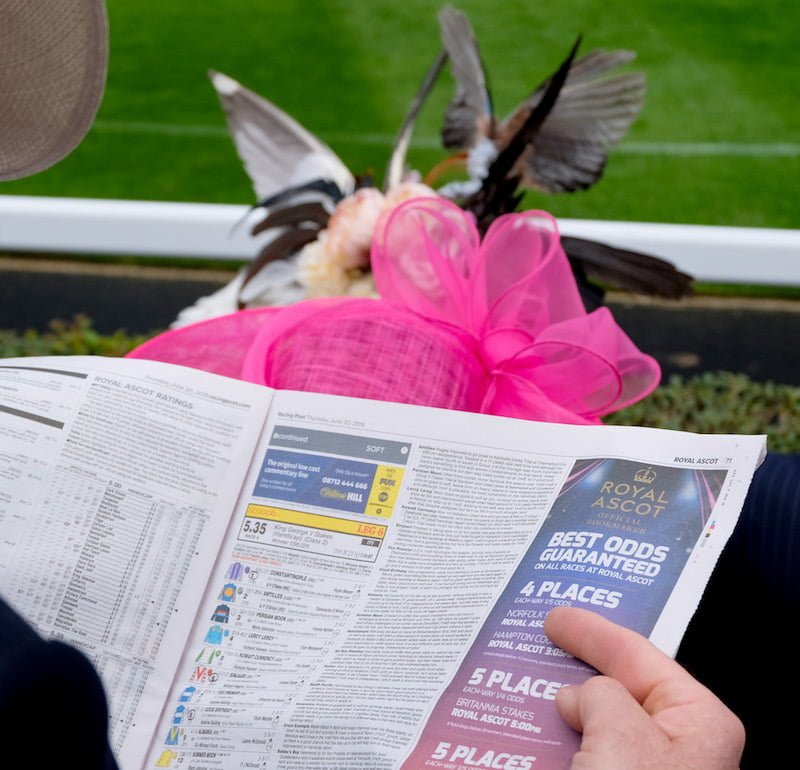Royal Ascot is a pinnacle of the Flat racing season and many of the races have seen over a century of renewals while others have been recently introduced. The race histories are outlined below.
For our full Guide to Royal Ascot please click here.
In alphabetical order:
The Albany Stakes (Group 3)
Six furlongs, Two-Year-Old Fillies
This race was first run in 2002 as the Henry Carnarvon Stakes, honouring The Queen’s late racing manager, and proved so successful that it was promoted to Group 3 status in 2005. Restricted to two-year-old fillies, the six-furlong event provides one of the first opportunities of the season for promising types to prove their ability and go on to harbour Guineas aspirations.
The Ascot Stakes (Handicap)
Two miles, four furlongs, Four-Year-Olds & Upwards
First run in 1839, the Ascot Stakes is run over two-and-a-half miles. Like the Gold Cup and Queen Alexandra Stakes, this race provides a thorough test of stamina. It is one of just four races at the Royal Meeting in which the field passes the winning post twice. As well as attracting some high-class horses from the Jumps sphere, the race normally features horses that will go on to run in the major staying handicaps throughout the season including the Northumberland Plate and the Ebor.
The Britannia Stakes (Heritage Handicap)
One mile, Three-Year-Old Colts & Geldings
First run in 1928 over the straight mile of the Royal Hunt Cup course and run under similar conditions today. Open to three-year-old colts and geldings only, the Britannia is almost as popular these days as the Royal Hunt Cup.
The Buckingham Palace Stakes (Handicap)
Seven furlongs, Three-Year-Olds & Upwards
One of six races added to Royal Ascot for 2020, the seven-furlong Buckingham Palace Handicap was reintroduced to the card having been lost when The Commonwealth Cup was created in 2015. Available to three-year-olds and upwards, it was first established in 2002 when a fifth day was added to the meeting to mark the Golden Jubilee. In 2020 it opened the Royal Meeting and is now retained permanently as part of the expanded programme and concludes the Thursday card.
The Chesham Stakes (Listed)
Seven furlongs, Two-Year-Olds
Named after the third Baron Chesham, who was the last Master of the Buckhounds from 1900 to 1901. First run in 1919, the Chesham Stakes replaced the first leg of the Triennial Stakes, which had been run over five furlongs for two-year-olds. Now a Listed contest, the race takes place over the longer distance of seven furlongs and is restricted to youngsters whose sire or dam won at ten furlongs or more. It was won in 2019 by the Champion two-year-old that year, Pinatubo, in a track record time.
The Commonwealth Cup (Group 1)
Six furlongs, Three-Year-Olds Colts and Fillies
The Commonwealth Cup was a completely new race in 2015 and joined the King’s Stand Stakes and Platinum Jubilee Stakes to become the third Group 1 sprint at Royal Ascot. The race, run over six furlongs, is restricted to three-year-old colts and fillies and was put in place as a Europe-wide measure to create a better Pattern for young sprinters and improve the quality of sprint races across the continent. Several races in the run up to the Commonwealth Cup were promoted in tandem, including the Commonwealth Cup Trial at Ascot, in April to Group 3. The 2019 renewal of the Commonwealth Cup, won by Advertise, was the joint highest rated three-year-old race in the world.
The Copper Horse Stakes (Handicap)
One mile, six furlongs, Four-Year-Olds & Upwards
Staged over a mile and three quarters, the Copper Horse Stakes was one of the six additional races to be run at Royal Ascot in 2020. Open to four-year-olds and upwards, Her Majesty The Queen graciously consented to the race’s name to be included and it now forms part of the permanently expanded programme. It is inspired by the magnificent statue of King George III – mounted on horseback – which marks the end of the Long Walk in Windsor Great Park. The inaugural running was won by Fujaira Prince who went on to win the Ebor at York and was then second in the Group 1 Irish St Leger and third in the British Champions Long Distance Cup on QIPCO British Champions Day.

The Coronation Stakes (Group 1)
Old mile, Three-Year-Old Fillies
First run in 1840 to commemorate the coronation of Queen Victoria two years previously, the Coronation Stakes is for three-year-old fillies and regularly attracts the winners of the British, Irish and French 1,000 Guineas. Recently it has also started to attract some of the top American fillies and so is a race that acts to crown the best of that year’s Classic generation over a mile. It was promoted to Group 1 level in 1988 and the most recent filly to follow up from one of the Guineas is Alpha Centauri who broke the track record when winning in 2018.
The Coventry Stakes (Group 2)
Six furlongs, Two-Year-Olds
First run in 1890, the race was named after the ninth Earl of Coventry, Master of the Buckhounds between 1886 and 1892. This is traditionally the first Group contest of the year for juveniles and as a result attracts some of the very best precious young horses, forming part of the high-class opening day card. Many top quality horses win this race before going on to achieve greatness including Canford Cliffs, Dawn Approach and Caravaggio since the race was promoted to Group 2 status in 2004.
The Duke of Cambridge Stakes (Group 2)
One mile, Four-Year-Olds & Upwards Fillies & Mares
Until 2013 run as the Windsor Forest Stakes, this race was a new addition to the Royal Meeting in 2004 and part of an industry-wide initiative to encourage connections of the leading Classic generation fillies from the previous year to keep their stars in training. Run over the straight mile course, it is open only to fillies and mares aged four or over. As a Group 2 race, Group 1 winners carry a penalty, so the option of the Group 1 Queen Anne Stakes, where no penalties are carried, is still open to the very best fillies.
The Duke of Edinburgh Stakes (Handicap)
One mile, four furlongs, Three-Year-Olds & Upwards
Originally the Bessborough Stakes, named after the fifth Earl of Bessborough, who was Master of the Buckhounds between 1848 and 1866, the race was renamed the Duke Of Edinburgh Stakes in 1999. First run in 1914 as a five-furlong event for two-year-olds, it has now evolved into a middle distance handicap for three-year- olds and upward.
The Gold Cup (Group 1)
Two miles, four furlongs, Four-Year-Olds & Upwards
Founded in 1807, the Gold Cup (which, contrary to popular opinion is not called the “Ascot Gold Cup”) is the oldest and one of the most prestigious races at Royal Ascot. Staged over the marathon trip of two-and-a-half miles, the race is a stiff test of stamina and attracts the very best staying horses in Europe. Many horses have distinguished themselves with multiple Gold Cup wins, enhancing the race’s reputation as a specialists’ event. Sagaro won three times in the 1970s and Stradivarius claimed his third straight success in 2020 but Yeats still stands tallest of all, becoming a four-time winner in 2009. The Queen’s Estimate won the 2013 Gold Cup, becoming the first horse to win the Gold Cup for a reigning monarch.
The Golden Gates Stakes (Handicap)
One mile, two furlongs, Three-Year-Olds
The penultimate contest at Royal Ascot was among the six prizes added to the race programme in 2020 and one of three newly named contests to be staged. The Golden Gates are the ceremonial entrance point as the Royal Procession arrives at the top of Ascot’s famous Straight Mile. Her Majesty The Queen graciously consented to the race title which is run over a mile and a quarter for three-year-olds only. The inaugural running proved a high-class contest with the winner, Highland Chief, subsequently being placed at Group 2 level.
The Hampton Court Stakes (Group 3)
One mile, two furlongs, Three-Year-Olds
This 10-furlong event, restricted to three-year-olds, was originally part of the Saturday Heath Day card, under the title of the New Stakes, and joined Royal Ascot as part of the Golden Jubilee celebrations in 2002. It was rechristened The Tercentenary Stakes in 2011, when the racecourse celebrated 300 years since its inauguration and was also promoted from Listed to Group 3 in tandem. The race reverted back to being the Hampton Court Stakes in 2017.

The Hardwicke Stakes (Group 2)
One mile, four furlongs, Four-Year-Olds & Upwards
Named after the fifth Earl of Hardwicke, Master of the Buckhounds between 1874 and 1879, the race was first run in 1879. The Group 2 contest continues to attract the best older middle distance horses and is often an informative guide to the King George VI & Queen Elizabeth QIPCO Stakes in July. It is run with no Group 1 or 2 winners’ penalties as a quasi-Group 1 race with top level horses regularly competing.
The Jersey Stakes (Group 3)
Seven furlongs, Three-Year-Olds
The Jersey Stakes replaced the second leg of the Triennial Stakes in 1919. Named after the fourth Earl of Jersey, who was the Master of the Buckhounds between 1782 and 1783, this specialist seven-furlong contest is framed for three-year-olds who have yet to win a Group 1 or Group 2 race, but have often competed at that level, including in the Guineas.
The Kensington Palace Stakes (Handicap)
Old mile, Four-Year-Olds & Upwards Fillies
A new handicap introduced for the first time in 2021 to be run over the Old Mile for four-year-old and upwards fillies and mares. Kensington Palace, set in Kensington Gardens, has been a residence for Members of the Royal Family since the 17th century. The inaugural winner last year was Lola Showgirl, a first Royal Ascot winner for trainer David Loughnane and jockey Laura Pearson.
The King Edward VII Stakes (Group 2)
One mile, four furlongs, Three-Year-Old Colts & Geldings
Formerly known, and still colloquially referred to as the Ascot Derby, this race was inaugurated in 1834 and regularly featured horses of both sexes that had competed in the middle-distance Classics. First run as the King Edward VII Stakes in 1926 and now restricted to three-year-old colts and geldings, that last three winners, Japan, Pyledriver and Alenquer, have all gone on to Group 1 success.
The King George V Stakes (Handicap)
One mile, four furlongs, Three-Year-Olds
Like the Duke of Edinburgh Stakes, this is a Handicap for middle distance performers, staged over one and a half miles for three-year-olds only. The inaugural running was in July 1946, as part of the fixture list expansion to include racing in July, September and October, before the race was transferred to Royal Ascot in 1948.
The King’s Stand Stakes (Group 1)
Five furlongs, Three-Year-Olds & Upwards
A Stand Plate was first run on the round course in 1837, becoming the Royal Stand Plate in 1858. The race was re- named the Queen’s Stand Plate in 1860 for two-year-olds, over the sprint distance of four furlongs, finally becoming the King’s Stand Plate in 1901. Today the race remains a sprint, although now run over the minimum trip of five furlongs for three-year- olds and upwards. In 2008 it was promoted to Group 1. The 2019 renewal was officially the highest-quality sprint race in the world with a rating of 120.25 after Blue Point and Battaash fought out the finish.
The Norfolk Stakes (Group 2)
Five furlongs, Two-Year-Olds
First run in 1843, this race was formerly known as the New Stakes and staged over a distance of just under four furlongs. In 1973 it was renamed after the Duke of Norfolk, Her Majesty’s Representative at Ascot between 1945 and 1972. For two-year- olds, it was promoted to Group 2 status in 2006.

The Palace of Holyroodhouse Stakes (Handicap)
Five furlongs, Three-Year-Olds
The final race on Friday was among six prizes added to the Royal Ascot race programme in 2020. A five-furlong sprint for three-year-olds, Her Majesty The Queen graciously consented to the race name, which recognises the Monarchy’s official Scottish residence. A race with similar conditions used to be run regularly on the Saturday Heath Day card and featured as part of the full Royal Ascot programme in 2002 and 2003 as the Balmoral Handicap. Upon its return in 2020, it was won by Art Power who went on to win a Group 3 at Naas before contesting the major Group 1 sprints later in the season.
The Platinum Jubilee Stakes (Group 1)
Six furlongs, Four-Year-Olds & Upwards
First run in 1868, this six-furlong contest was originally named after Lord Cork, another Master of the Buckhounds, and known as the Cork and Orrery Stakes. Royal Ascot’s most prestigious sprint was given a new name – the Golden Jubilee Stakes – and elevated to Group 1 status to celebrate The Queen’s Golden Jubilee in 2002. Ten years later, it assumed the mantle of the Diamond Jubilee Stakes and now it will be run as the Platinum Jubilee Stakes. In 2015, it became a race for four-year-olds and upwards, as the three-year-olds have the Commonwealth Cup option. It is routinely won by some of the best sprinters in the world, including Black Caviar, Undrafted and Blue Point in recent years.
The Prince of Wales’s Stakes (Group 1)
One mile, two furlongs, Four-Year-Olds & Upwards
The Prince of Wales’s Stakes, first run at Royal Ascot in 1862, is named after the son of Queen Victoria (later to become King Edward VII). Originally staged over a mile and five furlongs, the race often attracted horses that had participated in the Classics. There was no Prince of Wales’s Stakes from 1946 until 1968, a year before the current Prince of Wales’s investiture in 1969, when the distance changed to one mile and two furlongs. In 2000, The Prince of Wales’s Stakes was upgraded to Group 1 status and restricted to four-year-olds and upwards.
The Queen Alexandra Stakes (Conditions)
Two miles, six furlongs, Four-Year-Olds & Upwards
Run over the marathon trip of two-and-three-quarter miles, the Queen Alexandra Stakes is not only the longest race of the meeting, but also the longest contest run under Flat racing rules. Named after the consort of King Edward VII, the race was first run in 1864 as the Alexandra Plate over three miles. It will always be associated with Brown Jack, arguably Royal Ascot’s greatest equine legend, who won the race on six consecutive occasions between 1929 and 1934. The Queen Alexandra Stakes always closes the meeting and, perhaps because of its extreme distance in a time when so much emphasis is on speed, it has become a national institution and is affectionately supported by regulars.
The Queen Anne Stakes (Group 1)
One Mile, Four-Year-Olds & Upwards
Founded in 1840, the Queen Anne Stakes commemorates the monarch who established racing at Ascot in 1711. Run as the Trial Stakes until 1929, the Queen Anne Stakes was first awarded Group 3 status in 1971, becoming Group 2 in 1984. The race, attracting Europe’s top older milers, achieved the highest three- year average rating of any Group 2 race in Britain from 1999 to 2002 according to the then International Classifications and was elevated to Group 1 status accordingly in 2003. Run as the opening race of the week since 2008 it will once again get the Royal Meeting underway in 2022.
The Queen Mary Stakes (Group 2)
Five furlongs, Two-Year-Old Fillies
Named after the consort of King George V, this race was first run in 1921. The Queen Mary Stakes is the first major race of the season exclusively for two-year-old fillies. Run over the minimum distance of five furlongs and promoted to Group 2 status in 2004, it provides a useful opportunity to assess their ability and potential to perform at Group 1 level. American trainer Wesley Ward has an exceptional record in the race having saddled the winner four times since 2009, including most recently with Campanelle in 2020.
The Queen’s Vase (Group 2)
One mile, six furlongs, Three-Year-Olds
Promoted to Group Two in 2017, the race was named to honour Queen Victoria and first run in 1838. This race became the King’s Vase in 1903 and reverted to its original name of the Queen’s Vase on the succession of Queen Elizabeth II. Run over a-mile- and-three-quarters, this contest provides a test of stamina for three-year-olds and winners of the race often go on to compete in the Gold Cup in future years. Her Majesty The Queen’s Estimate and current stay stayer Stradivarius are the most recent Queen’s Vase winners (2012 and 2017 respectively) to win the historic Gold Cup in subsequent seasons.

The Ribblesdale Stakes (Group 2)
One mile, four furlongs, Three-Year-Old Fillies
This race, mirroring the conditions of the Oaks, is named after the fourth Baron Ribblesdale, Master of the Buckhounds between 1892 and 1895. First run in 1919, this race was originally staged over a mile for three and four-year-olds. It is now restricted to Classic generation fillies and run over the longer distance of a mile and a half. John Gosden has won four of the last five renewals, including when training in partnership with his son Thady for the first time in 2021 with Loving Dream.
The Royal Hunt Cup (Heritage Handicap)
One mile, Three-Year-Olds & Upwards
The Royal Hunt Cup always provides one of the greatest spectacles of the Royal Meeting as a maximum field thunders up Ascot’s straight mile course for one of the biggest betting races of the season. First run in 1843, it was originally staged over seven furlongs and 155 yards. The current distance of a mile was established in 1955 when the straight course was re-aligned as part of the previous redevelopment.
The Sandringham Stakes (Handicap)
One mile, Three-Year-Old Fillies
Originally registered as the Fern Hill Stakes, this race was part of the traditional Heath Day card on the Saturday after Royal Ascot. It was renamed after the Norfolk Royal residence when the Royal Meeting was expanded to five days as part of the Golden Jubilee celebrations in 2002. This is a competitive handicap over a mile, limited to three-year-old fillies only.
The St James’s Palace Stakes (Group 1)
Old mile, Three-Year-Old Colts
Named after the Tudor Royal residence, the inaugural running of the St James’s Palace Stakes in 1834 was a walkover for the Derby winner Plenipotentiary. This race features the best male milers from the Classic generation, often attracting horses that have run in the British, French and Irish 2,000 Guineas. Frankel, Kingman and Circus Maximus are recent superstars to have won the race while the 2020 renewal was particularly memorable, producing the race of the week as Palace Pier defeated Pinatubo and Wichita in a thrilling finish.
The Windsor Castle Stakes (Listed)
Five furlongs, Two-Year-Olds
First run in 1839 over the straight mile course, this race was originally designed to attract three-year-old colts and fillies that had competed in the early season Classics. It is now run over the minimum distance of five furlongs and restricted to two-year- olds. The 2020 renewal was won by Tactical for Her Majesty The Queen, a home bred son of Toronado. Trained by Andrew Balding and ridden by James Doyle, he was The Queen’s 24th winner at the Royal Meeting.
The Wokingham Stakes (Heritage Handicap)
Six furlongs, Three-Year-Olds & Upwards
The inaugural running of the Wokingham Stakes took place in 1813, making this race the oldest handicap at Royal Ascot. This famous sprint is named after the market town seven miles from Ascot Racecourse, and the first dual winner was appropriately also named Wokingham (1881 and 1882). Over the years, the race has developed a reputation as a fiercely competitive handicap and one of the major betting heats of the season.
The Wolferton Stakes (Listed)
One mile, two furlongs, Four-Year-Olds & Upwards
First run in 2002 as part of the five-day Royal Ascot meeting to celebrate The Queen’s Golden Jubilee, this is a Listed race over 10 furlongs for four-year-olds and upwards, having been a Listed Handicap until 2017.

Karen can usually be found glued to her computer or at the stables. Having edited several national magazines she co-founded Eclipse Magazine in 2008 after realising that many of her friends were nervous about going racing due to lack of information – what to wear, how to bet etc.
She absolutely loves her job (how many people can say that?!) and is truly grateful to all supporters of and contributors to Eclipse Magazine.
If you are reading this she would like to say THANK YOU! (And please spread the word about Eclipse…!!)





